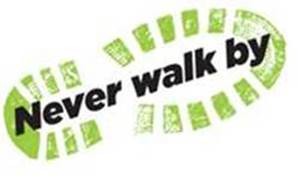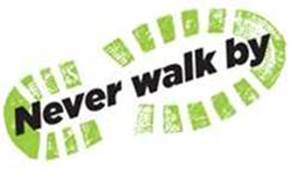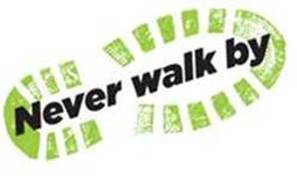Title Page
-
Document No.
-
Enter your Name and type of walk here eg. Safety/Quality/Environment
-
Conducted on
-
Location
HSE - WALK
-
A WALK is an opportunity to have a discussion with people about Health, Safety, Environment and Quality. It is a tool for leaders to reinforce positive behaviours and address undesirable ones.
Plan where and when you will conduct your WALK and set aside the appropriate time.
ENGAGE. LISTEN. EMPATHY. COMMITMENT. Ask open HSEQ related questions that encourage discussion.
Examples of focus areas/questions to get the conversation started are shown following your choice of Focus.. -
Is this walk being conducted at Burleigh ?
-
What is the focus for this walk ?
Example Quality/GMP focus
-
PPE - Hairnets worn correctly, Correct Hairnet colour, Gloves worn are in good condition - clean/ undamaged, No loose safety glasses
Personal Hygiene - No evidence of eating or drinking, No evidence of false nails/nail polish, Only metal detectable band aids in use, No jewellery
Equipment - No flaking paint above open product/ food contact surfaces, No peeling labels, All food contact stored above the ground, No loose tools (bolts, screws, washer etc.), Only metal detectable pen in use and tethered, Only metal detectable cable ties in use above open product/ food contact surfaces
Cleaning Equipment - Correct colour coded cleaning equipment in use, Cleaning Equipment is clean and undamaged, Cleaning Equipment stored in their designated areas & above ground, Rubbish bins are undamaged and clean, Rubbish bins not overflowing
Pest - No pest sighted, No gaps under the door leading externally, Insectucators are working, All bait stations are attached, No Insects, webbing, tracks, droppings, feathers
Toolbox - Tool register, Approved tools only (undamaged, wooden handled), Clean, Adhesive labels removed
Example Environment focus:
-
Spill prevention
• Can you tell me where the drains in this area go? What is allowed to go down the stormwater/trade waste drains? What should be kept out of all drains?
• What would happen if that item leaked or was ruptured? Where would the contents run off to? What would you do if there was a spill?
• Are there any activities (e.g. decanting or moving chemicals) that could cause an increased risk of causing a spill to stormwater? What extra precautions could you take?
• When was the last time you noticed a spill or a risk that a spill would not be contained? What did you do about it?
Energy, water and waste
• What is the main energy using equipment you are working with? Are there opportunities to turn the equipment off during gaps in production? Do you have any other ideas on how to reduce energy use in the factory? Have you reported these
• What is compressed air used for in this area? Are there other ways to do these activities without compressed air?
• How do you use water in this area? Have you got any ideas about how we could use less?
• What types of waste are generated in the area? What causes the waste? Do you have any ideas on how we could reduce it?
• Can you explain how the recycling systems work in this area? Do you have any ideas on how they could be improved?
Compliance and neighbours
• Where are our nearest neighbours?
• What activities do we undertake that might impact our neighbours?
• Do any of your tasks have the potential to create noise, odour or dust that might impact beyond our site?
• If you lived/worked next door what concerns would you have about our operations?
• What other aspects of your job or other activities on site worry you when it comes to the environment?
Example Health and Safety focus:
-
What are some of the safety issues you’ve had to tackle/control today? How did you do it?
Where to you keep all the PPE you need for your tasks? (observe what condition is it in)
If you could make one change/improvement to safety around your machine/area, what would it be? Why did you choose that? What have you done about it so far?
When was the last time you reported a hazard/Near miss? Tell me about it. Have you had feedback on it?
What task were you doing when you last had an ‘oh s#*!’ moment? What did you do about it?
What have you locked out doing this task? How do you know it’s isolated? Where are the isolation points?
What hazards have been reported at this machine/in this area recently?
What makes you nervous doing your day to day job? Think about when new people are in your area.
When new people are in your area/at your machine, what things do you have to tell them to keep them safe?
What do you sometimes worry about at the machine/in the area that could hurt you?
How often do you interact with this moving part? How do you make sure you do it safely? -
Select the Location/Work Area.
-
Date and Time
-
Conducted By - Name and Signature
-
Are there other person/s on the walk
-
Conducted by - If reqd
-
Conducted by - If reqd
-
Conducted by - If reqd
Key Behaviors and Awareness
-
Name of person/s being observed
-
Work Activity: What job are you observing? Eg. Weigh up, Slicing, Cleaning, Maintenance Fault finding. Be Specific.
-
List any Behaviours Observed based on your focus (Remember to give positive reinforcement!)
-
List any Undesirable Behaviour(s) observed based on your focus, if applicable (Remember to inform team leader for follow up)
-
Alternate positive behaviour(s) discussed (Remember to support staff to come up with this – don’t dictate)
-
Summary of Conversation
-
Did you obtain the commitment to change the undesirable practise(s) and adopt agreed positive alternative? Thank the participant.
Follow Up Required
-
Do you wish to allocate an Action to someone ?<br>Click on the "paperclip" on the right.<br>Press "Action"<br>Enter specific action.<br>Assign to a person using email or pick from list.<br>Assign Priority and always enter a due date.
-
List Corrective/Preventative actions taken immediately. Include any Root Causes identified.









